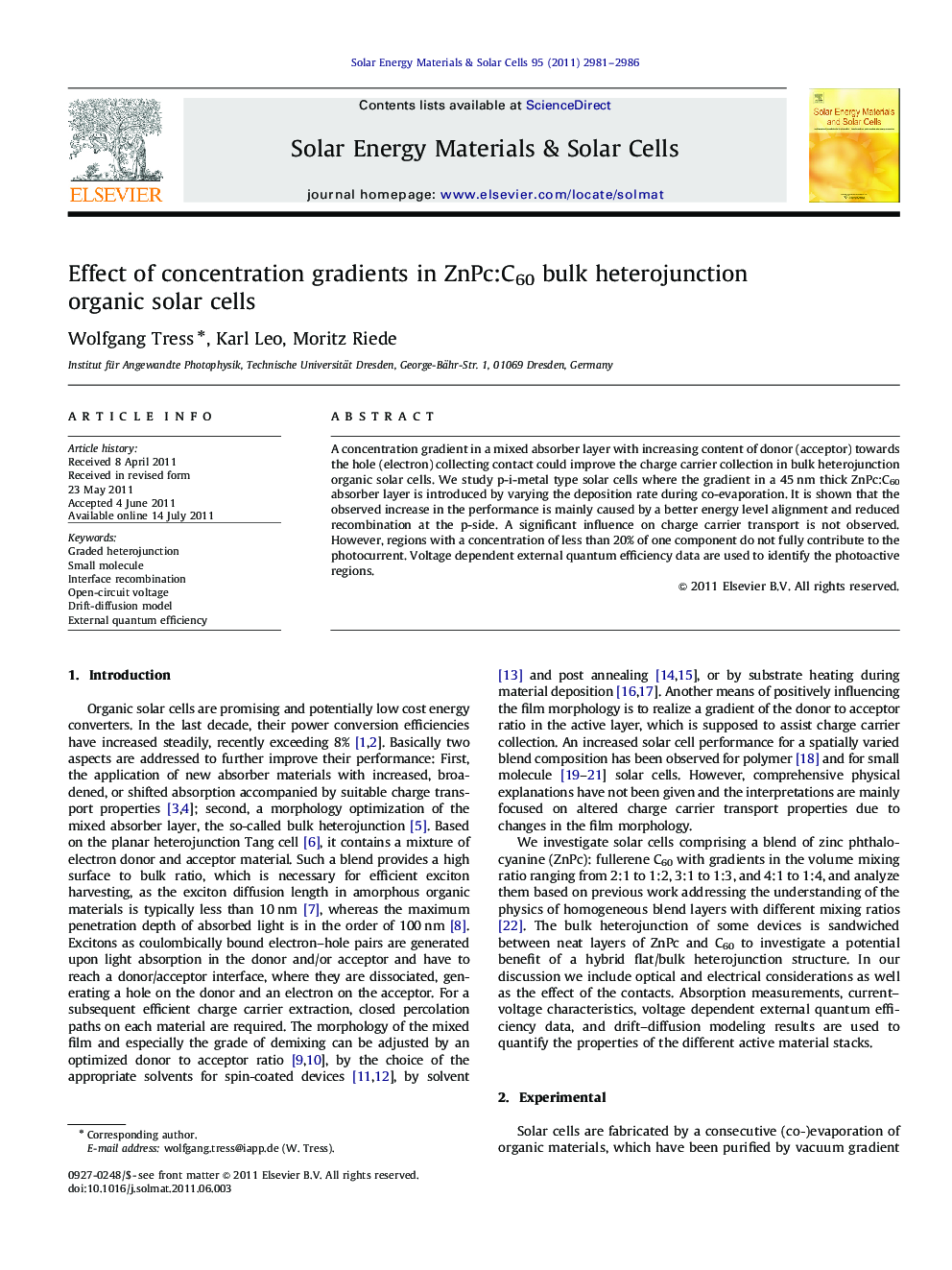| Article ID | Journal | Published Year | Pages | File Type |
|---|---|---|---|---|
| 79347 | Solar Energy Materials and Solar Cells | 2011 | 6 Pages |
A concentration gradient in a mixed absorber layer with increasing content of donor (acceptor) towards the hole (electron) collecting contact could improve the charge carrier collection in bulk heterojunction organic solar cells. We study p-i-metal type solar cells where the gradient in a 45 nm thick ZnPc:C60 absorber layer is introduced by varying the deposition rate during co-evaporation. It is shown that the observed increase in the performance is mainly caused by a better energy level alignment and reduced recombination at the p-side. A significant influence on charge carrier transport is not observed. However, regions with a concentration of less than 20% of one component do not fully contribute to the photocurrent. Voltage dependent external quantum efficiency data are used to identify the photoactive regions.
Graphical abstractFigure optionsDownload full-size imageDownload as PowerPoint slideHighlights► Donor/acceptor concentration gradients in a 45 nm thick ZnPc:C60 bulk heterojunction are studied. ► No significant improvement of charge transport within the blend is observed. ► The gradient decreases losses caused by recombination of electrons at the p-contact. ► Thus, open-circuit voltage and fill factor increase for graded heterojunctions. ► The gradient is beneficial for a mixed/hybrid flat and bulk heterojunction, however mixing ratios larger than 4:1 are detrimental.
